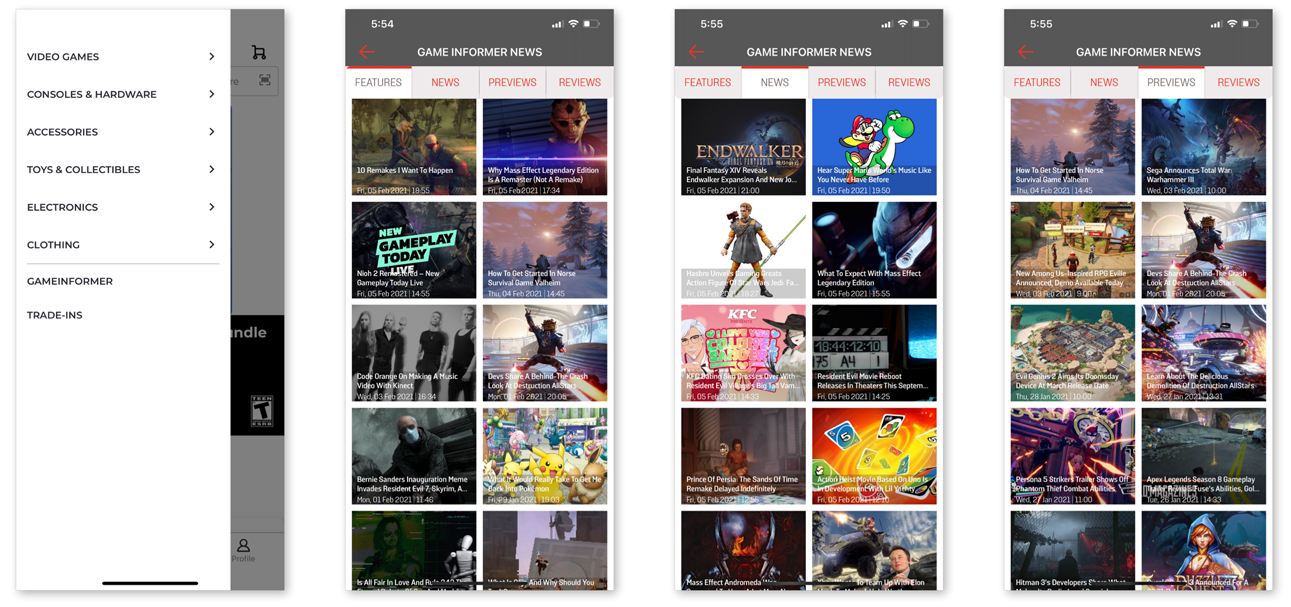


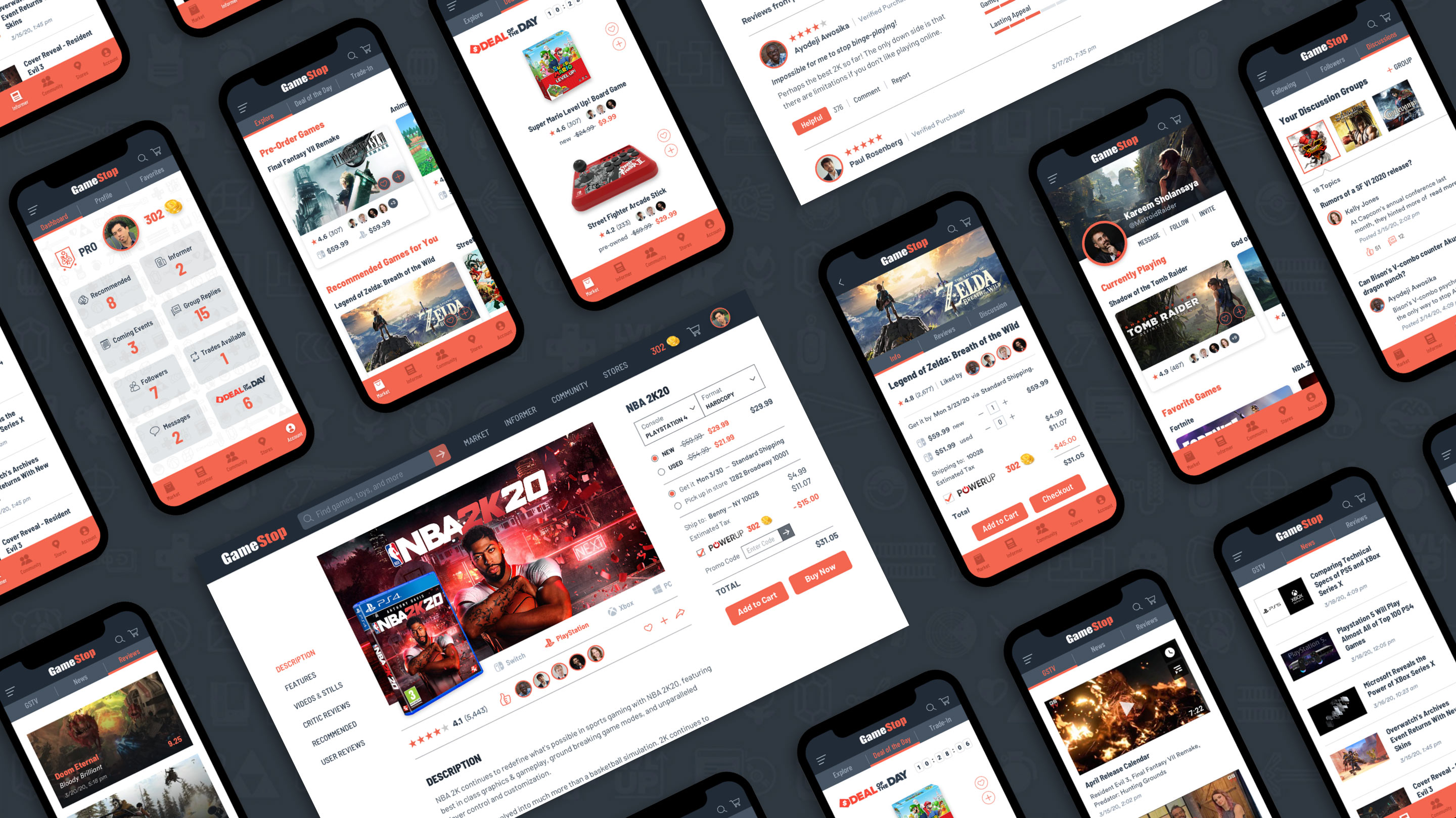
GameStop asked my Mindtree team to provide a POV and assessment of their declining customer engagement and revenues within a 2 week time frame. We approached this project as a mini, condensed version of a full discovery process that we typically conduct for clients. With a design thinking methodology, we involved a technical, business and strategy team, while I directed creative vision. We went through iterations of user research, interviews, prototyping, testing, and by the end of this engagement, we delivered a technical assessment report, future state journey, conceptual prototypes, product road maps, implementation plans, and architecture recommendations. In this case study, I will only be detailing work I was directly involved in.


Design Thinking My team and I devised a comprehensive strategy, considering technical, design, and business implications to arrive at solutions that effectively address current GameStop issues.
User Research I led customer research, conducting 5 initial interviews, and follow-up testing sessions. I also conducted secondary research, reviewing social commentaries and public sentiment analysis.
Market Research I examined gaming trends, competitors, and gathered inspiration from other industries.
Data Analysis I analyzed the past 2 years of website metrics, derived insights, and strategized fitting solutions.
Product Design I was the only designer, creating all wireframes, high-fidelity mockups, and prototypes.
Art Direction I created a consistent new visual branding, applying it to mobile app and desktop formats.
GameStop approached us with specific requests to reimagine their mobile app experience, and to improve their product detail pages for increased checkout and transaction rates. We were asked to provide strategy recommendations, design POV, technical recommendations, and requirements.

My approach was mainly based on primary research and social listening on sites such as Reddit. I selected 5 interviewees, ranging from casual to professional gamers. I began all interviews asking about their general game playing habits, without ever mentioning GameStop. My intention was to determine if they would organically reference the brand in our conversation. I did not want to promote any bias. Even when I asked them for their thoughts on GameStop, I said I may be interviewing on behalf of the company or as a competitor. I wanted them to be authentic in their responses. I finally revealed the client during user testing of my prototype. Below are my interview script, methods, and findings.
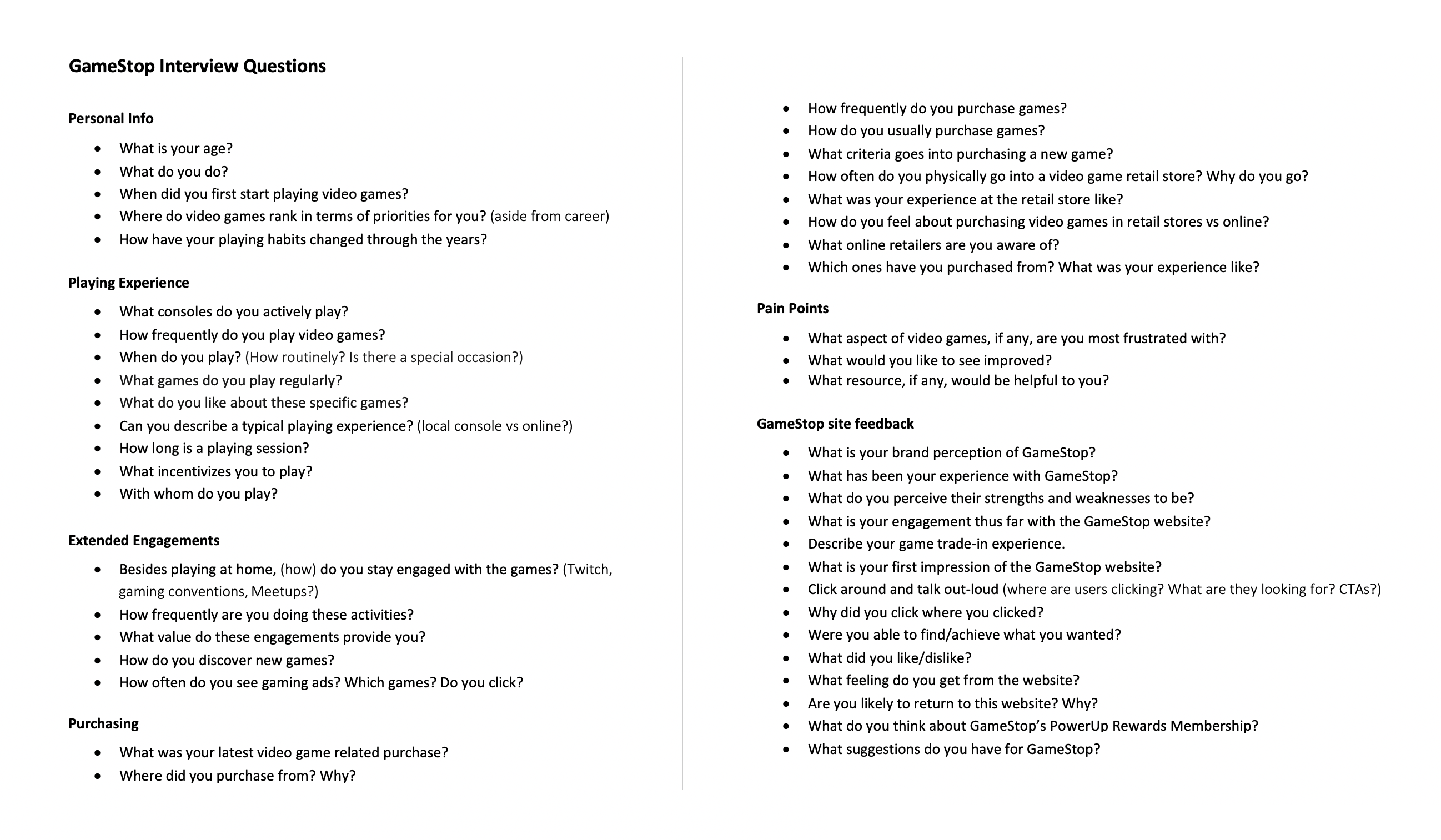
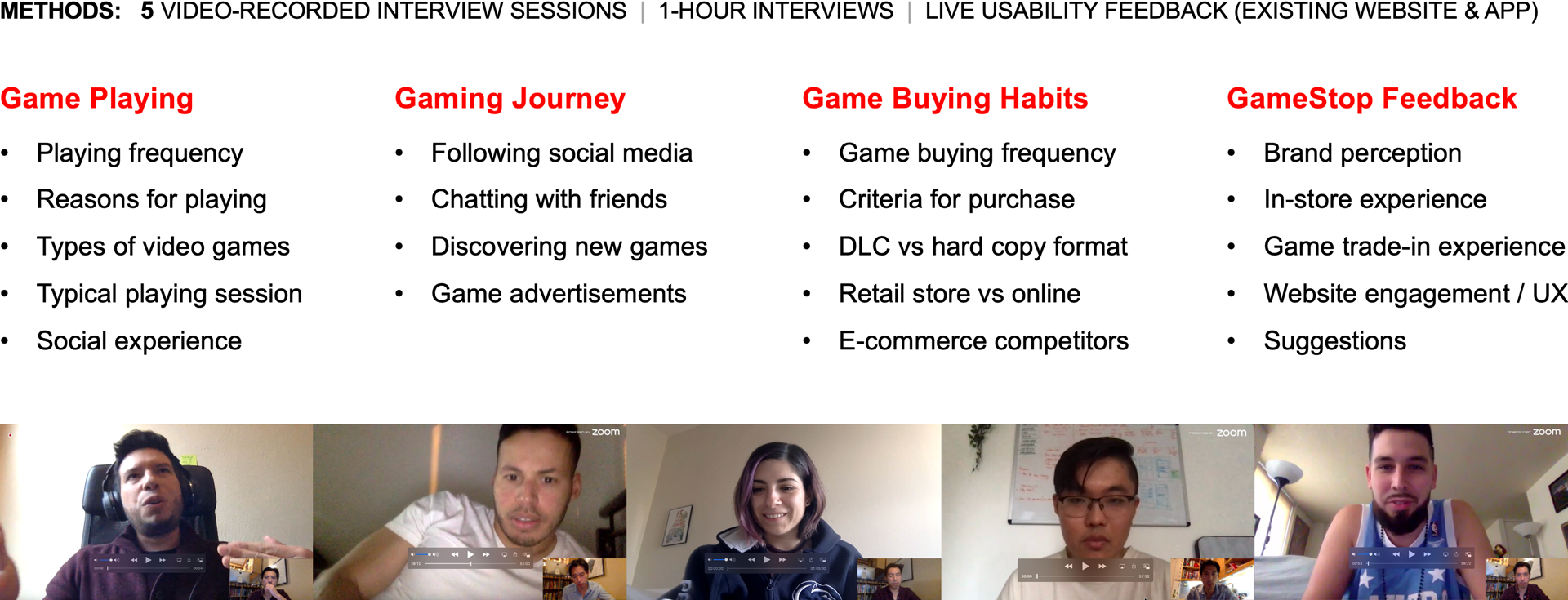
Community Brings Engagement Everyone who claims to be an active gamer has a community either for competitive thrill or discovery of new games. GameStop has not been doing enough to foster players' interest.
Ill Brand Perception = Less Sales Majority of the interviewees consider GameStop to be overpriced and "ripping people off" in game trade-in value. Hence, less interaction with brand and less transactions.
3-4 Games Played in Rotation Gamers tend to play up to 4 different game campaigns at any given time.
Reviews Lead to Loyal Following Gamers value news and release updates about games. That trust will lead to more sales. Alot of gamers do not know Game Informer is related to GameStop.
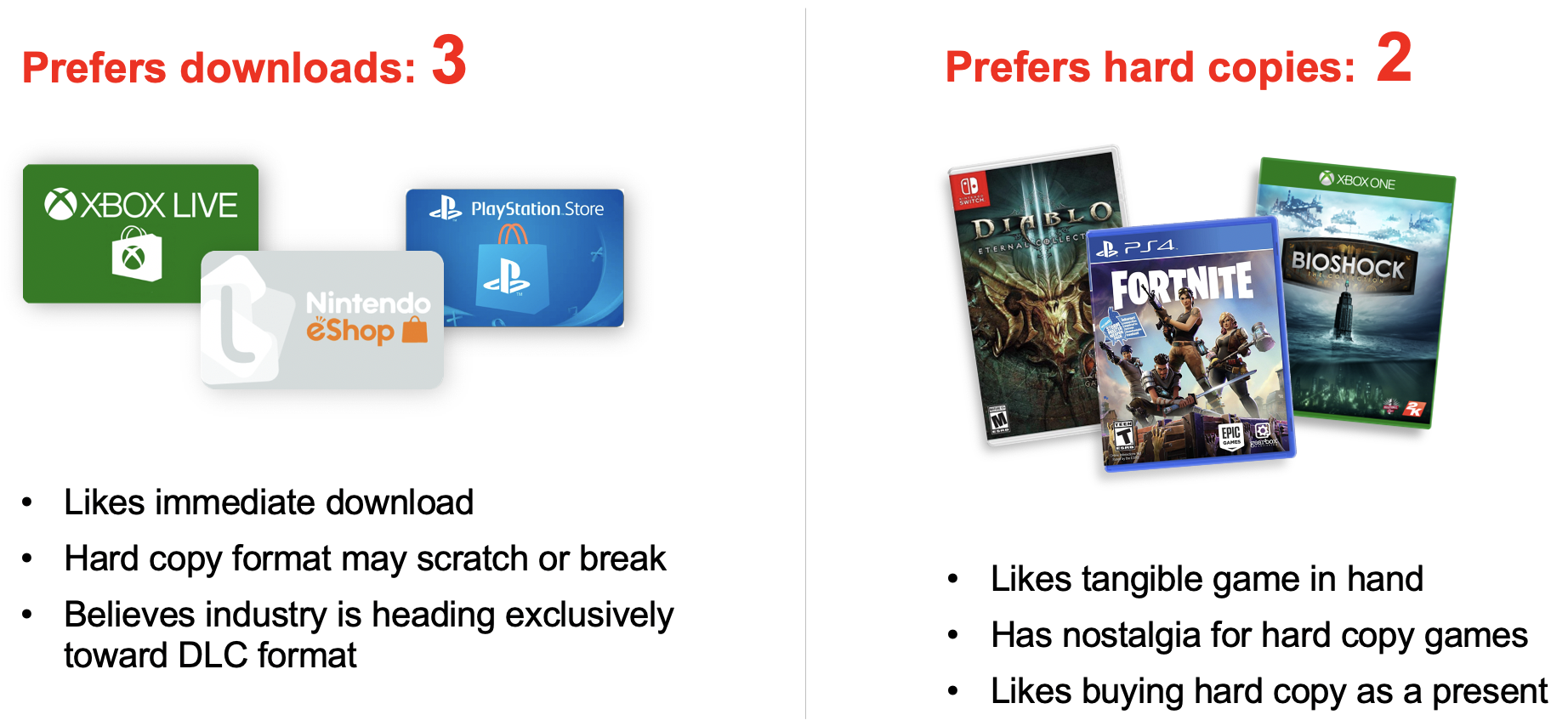
Based on primary and secondary research, I identified 4 gamer personas: (1) hardcore gamer, (2) gaming enthusiast, (3) social gamer, and (4) parent gamer. My team and I believe that the gaming enthusiast is the persona that presents the most opportunities for increasing brand engagement.

Through my interviews, I gained knowledge about the main brands that consumers go to for their game purchases, as shown in my diagram below. The two main distributors are: (1) brick and mortar retailers such as GameStop, Best Buy, Target and Walmart, and (2) e-commerce sites like the aforementioned, Amazon and Ebay.
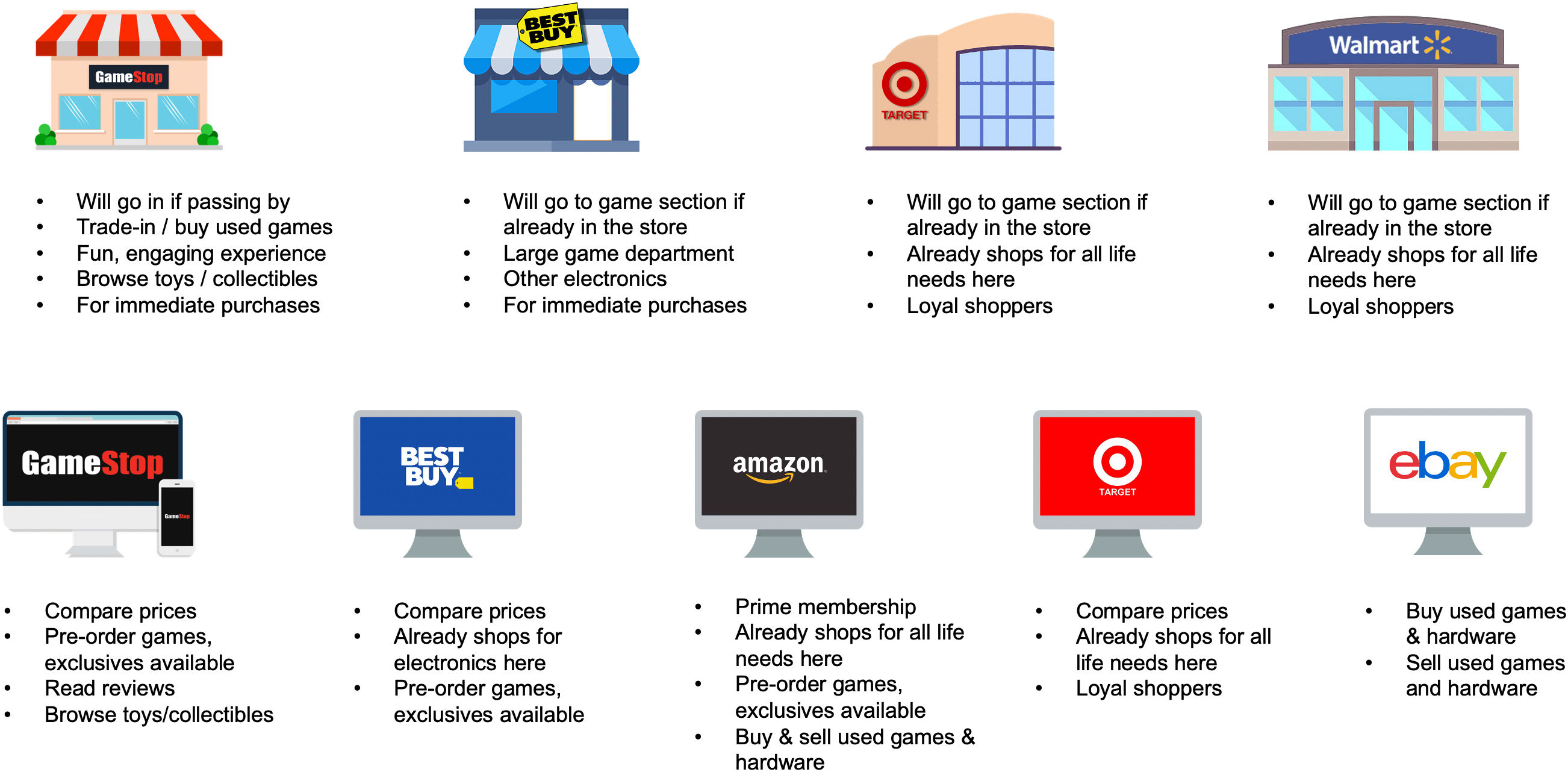
"Since I'm already here..." Customers already shopping in a physical retailer are more likely to visit the game section, even if they have no intent of buying.
"I want it now" Customers with an immediate need to purchase games or accessories go to a physical retailer.
Add to Cart = Commitment Customers who add games to cart tend to checkout when shopping sprint is done.
Loyalty Points Incentive Customers tend to buy from same brand for to earn points unless item is unavailable.
Since GameStop has multiple channels and consumer touchpoints, I sought to map out its ecosystem to understand different consumer journeys, as shown in my diagram below. Based on numerous interviews with gamers, I documented the main reasons why a consumer would currently enter these respective channels:
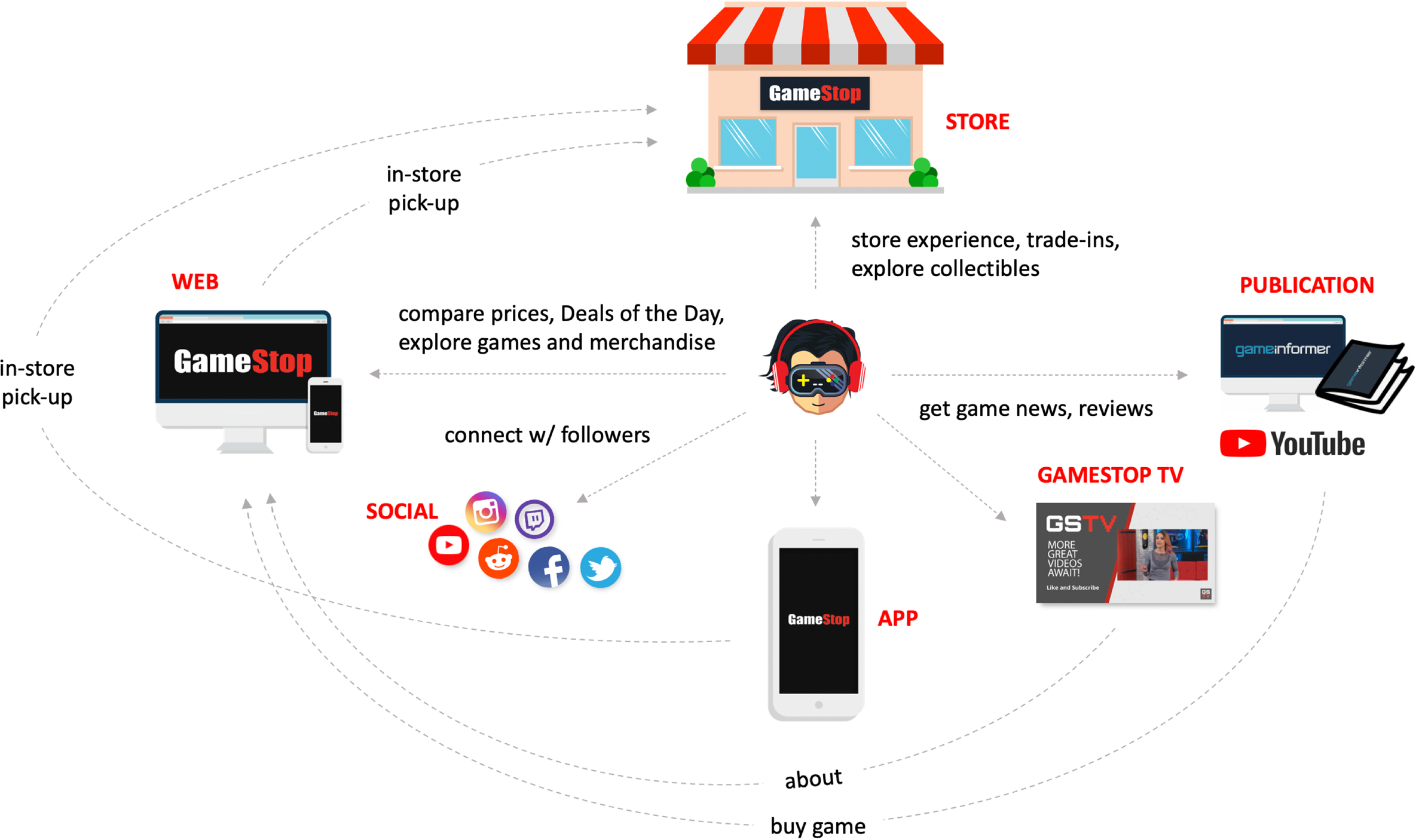
Consumers go to ...
Retail Store To get the physical store experience, speak with sales reps, pick up an online-order, buy used games and exclusive collectibles only available in-store, and trade-in games.
Website & App To compare product pricing with other online retailers, view Deals of the Day, explore games and merchandise, place order for in-store pickup. Consumers are notified of promotions and releases via mobile app.
Game Informer To get the latest news, release information, rumors, reviews, and game secrets.
GSTV & YouTube To view talk show episodes with commentary and discussions about games and trends.
Social Media To join discussion boards, connect with others, and watch live streaming of others playing.
In assessing these channels, I recommend an approach to connect these channels under one portal platform, thereby enabling customers to be aware of all the brand's entities, assets, products and services, and strengthen the brand's value proposition. I will discuss this approach later, in the Ideation section.
Since GameStop asked for our POV, I assessed their existing website and mobile app based on UX heuristics and best practices. In addition, as part of our due diligence, we asked GameStop to supply us with recent website metrics. They provided data for the past two years, which I analyzed, as shown below.


Increasing Bounce Rate Content, information hierarchy, and site architecture need to be enhanced via further engagement strategy such as community and personalization.
Buying More Likely On Desktop Transactions occurred almost 2x more on desktop because buying action requires commitment, and the larger screen allows consumers to better see reviews and product details.
3/4 of Sessions on Mobile Though purchases are more frequent on desktop, mobile access is critical, as it secures consumer engagement, thereby making GameStop a memorable option when deciding to buy.
In order to effectively evaluate GameStop's existing app, I downloaded it and created an account. I expected the app to show me content based on my searches and game interest, however it seems to show what GameStop is trying to promote. The "Deals" screen emphasized too many marketing ads, which drowned out the actual products. Multiple search results were found for 1 title, without differentiating which console it was for. I recommend having 1 main product page, which then enables consumers to toggle between consoles, thereby eliminating the multiple search results upfront. I believe the app can appear more visually fun and engaging as well. My further critique is shown below upon hover.
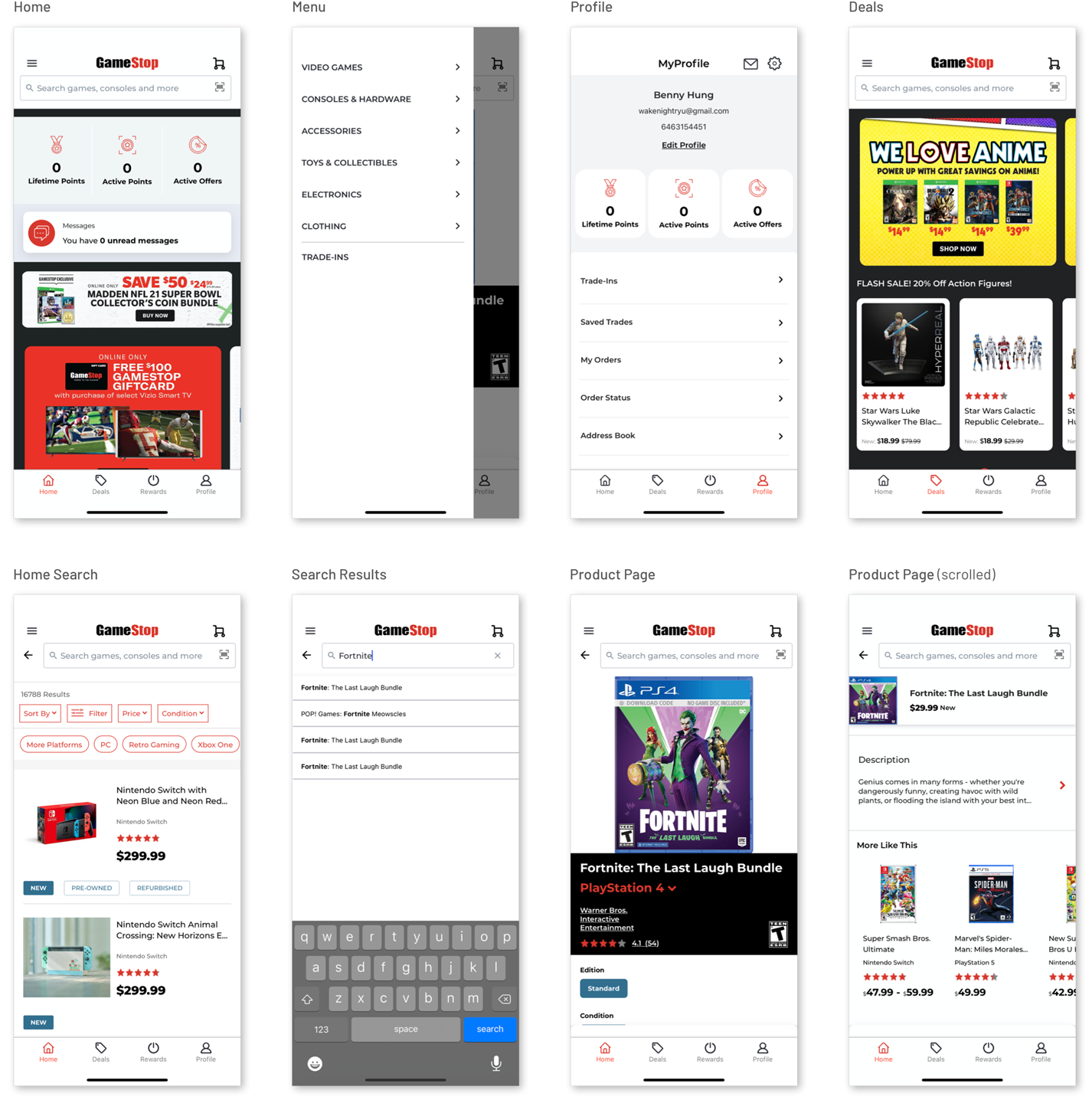
Since most checkout completions are done on desktop, I studied the existing product detail page (PDP). My overall impression is that their spacing between text and images can be better utilized for increased engagement. I would propose a different content strategy to help consumers quickly identify game features, screenshots, etc. Although the current site has sticky navigation for sections, its display can be enhanced. I will be addressing these issues later in my prototype.
After understanding that consumers prefer going to "all-your-needs" shopping sites like Amazon and Walmart to purchase games over GameStop, I realized the need for GameStop to offer differentiated value. Currently, their platform is solely based on e-commerce; when consumers arrive at the site, they are bombarded with products, discounted items, and deals ads. I immediately thought about industry leaders such as Tennis Warehouse and Goodreads (as shown below), and identified their successful Content-Community-Commerce model. When I proposed this strategy with my team, everyone unanimously agreed to adapt this approach for GameStop. Below are also key ideas we came up with, which will be reflected in our prototypes.

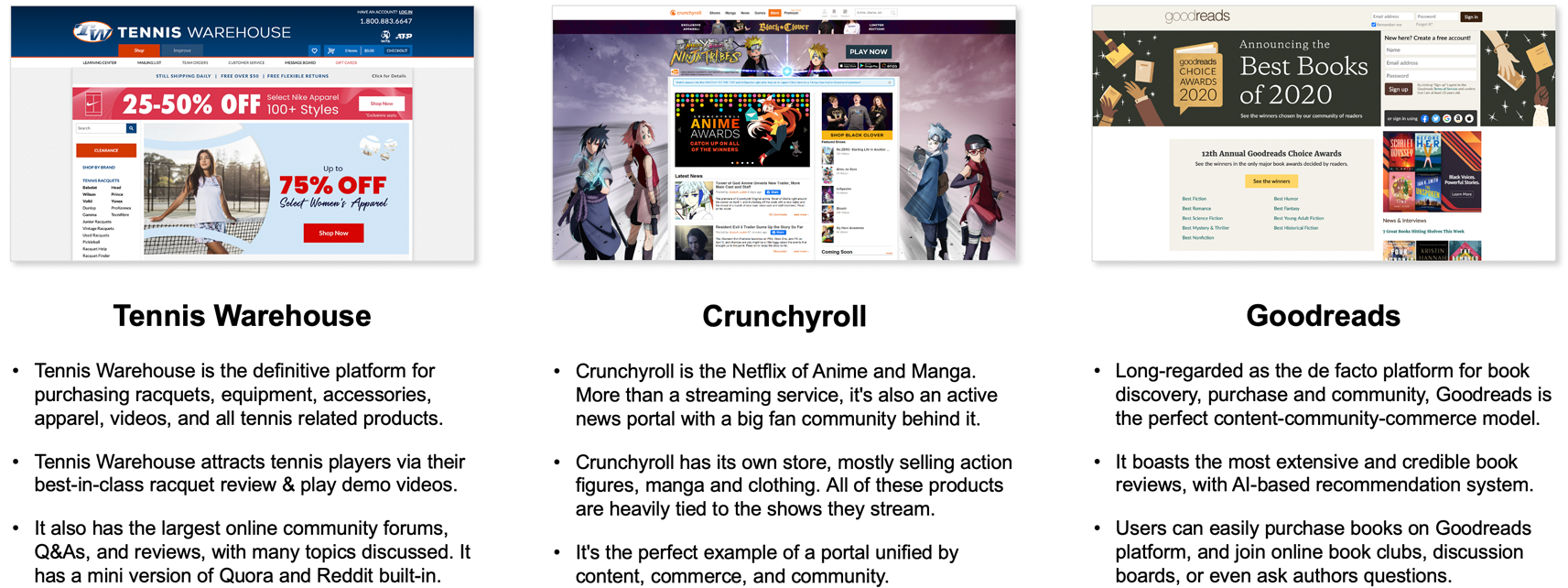
Integrate Game Informer Embed this established gaming news, reviews and release updates brand within website and app as content outreach to build community and loyal following.
Display Gamer Profiles Enable users to create public profiles where their favorite and current played games are shown, and others can follow, message, or recommend games to them.
Build Communities via Groups Enable users to follow game titles, join discussion boards and Q&As on topics. Enable them to start new groups and create conversation threads with other users.
Display Gamers on Game Profile On a game's profile page, display which gamers own, like, or are currently playing that game; this would lead to more curiosity, engagement, and purchases.
Add Timer to "Deals of the Day" Add a trigger - a countdown timer to alert users about item promotions; it would prompt users to visit these deals more since there is a sense of urgency.
Display Total Estimated Price On product pages, display price including delivery fee (and PowerUp points) based on zip code. This saves users the step of pressing the checkout button to find the final price.
Tri-section Desktop PDP Layout To facilitate and encourage buying behavior, enable users on desktop to accessibly navigate through product descriptions, reviews, and easily purchase.
Aggregate Titles into 1 PDP Show 1 search result per game title, and upon redirecting to product's page, enable toggle for different console versions, and reflect respective ratings and community.
Dynamic User Dashboard Direct logged-in users to their dashboard by default, showing notifications and other pending alerts for a more personalized experience.
Book In-Store Testing Session To promote users visiting retail GameStop stores, enable users to book (via app and website) pre-launch game testing appointments in their local GameStop stores.
Integrate 3rd Party Reviews To encourage consumers to purchase on the checkout page, incorporate IGN, Metacritic and Kotaku reviews so they don't need to leave the GameStop site to reference elsewhere.
While ideating GameStop features, I also considered them in the context of persona touchpoints. When and how would a persona use these features? Through my validated interviews and research, I crafted a detailed and realistic journey of what a week in the life of a "Game Enthusiast" (previously defined persona) could look like, as shown in the diagram below. Another designer helped create the visuals for this journey map.

Through ideation sessions and future state planning, my team listed proposed features and functions, as shown in an excerpt of requirements below. Melissa collected our inputs and created this document. Some of these ideas are reflected in our conceptual prototypes, shown in the next section.
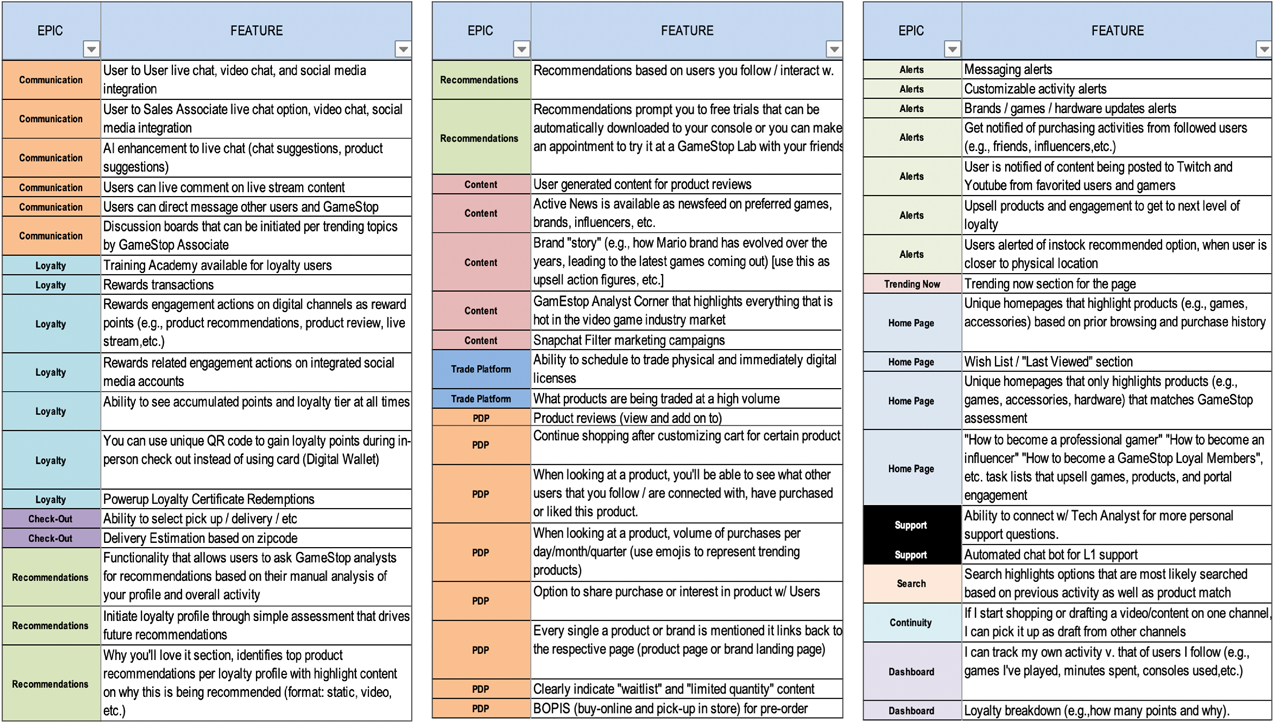
Implementing new ideas and requirements outlined in previous sections, I designed a holistic and scalable site architecture for both desktop and mobile app formats, recreated the visual branding, and redefined information hierarchy. While these prototypes (shown below) bring to life new interactions and features, it is a conceptual protoype, and does not fully represent all functionality nor replace existing ones.
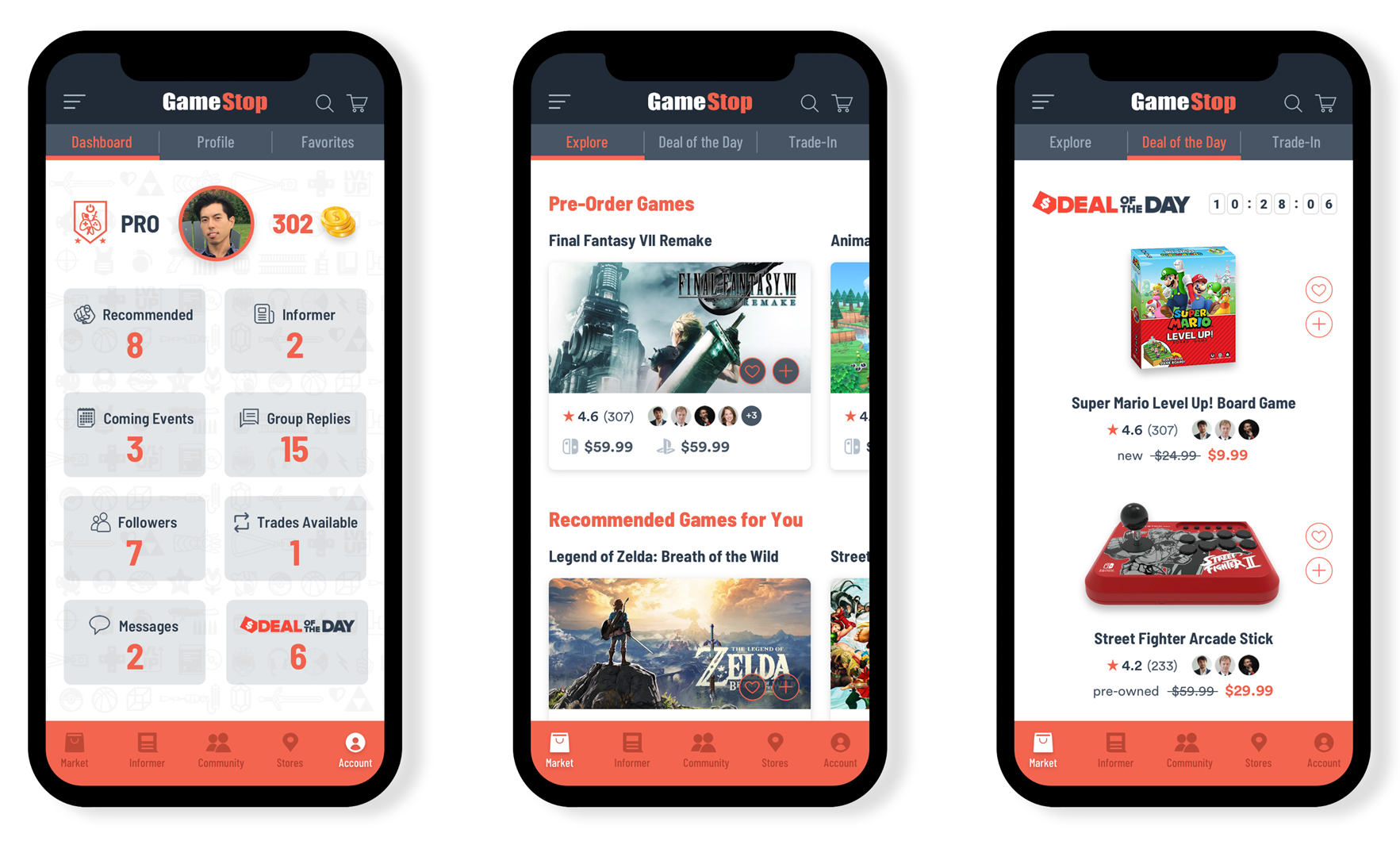

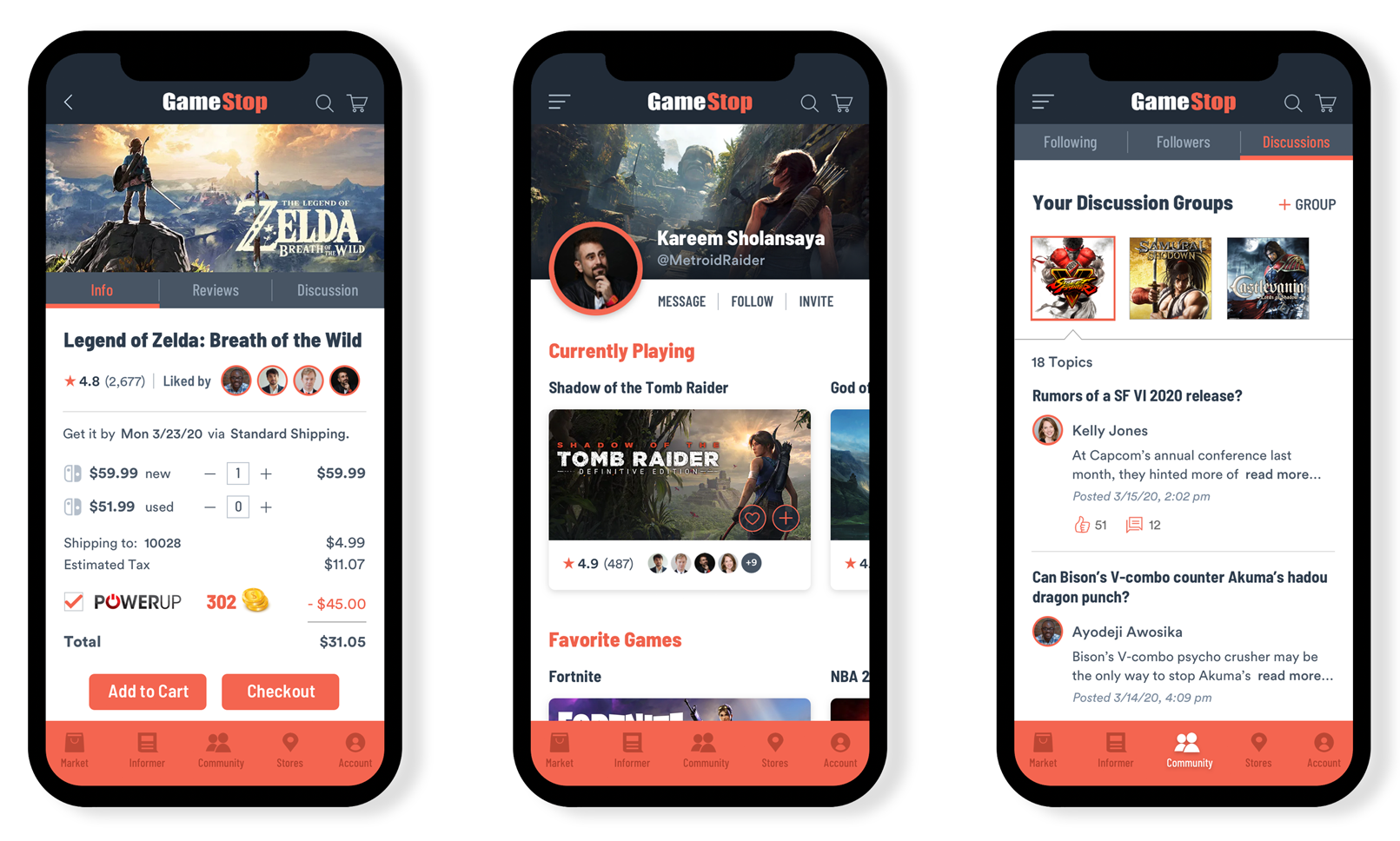
My team was able to receive feedback from our original interviewees, and 2 new testers as well. Everyone had very positive feedback toward aggregating content, community and commerce into the platform. In addition, almost everyone commented on the visual design feeling fresher and more "fun". They all seemed enthusiastic about this new design and have asked when it will be launched. Below are some feedback sound bytes and quotes:
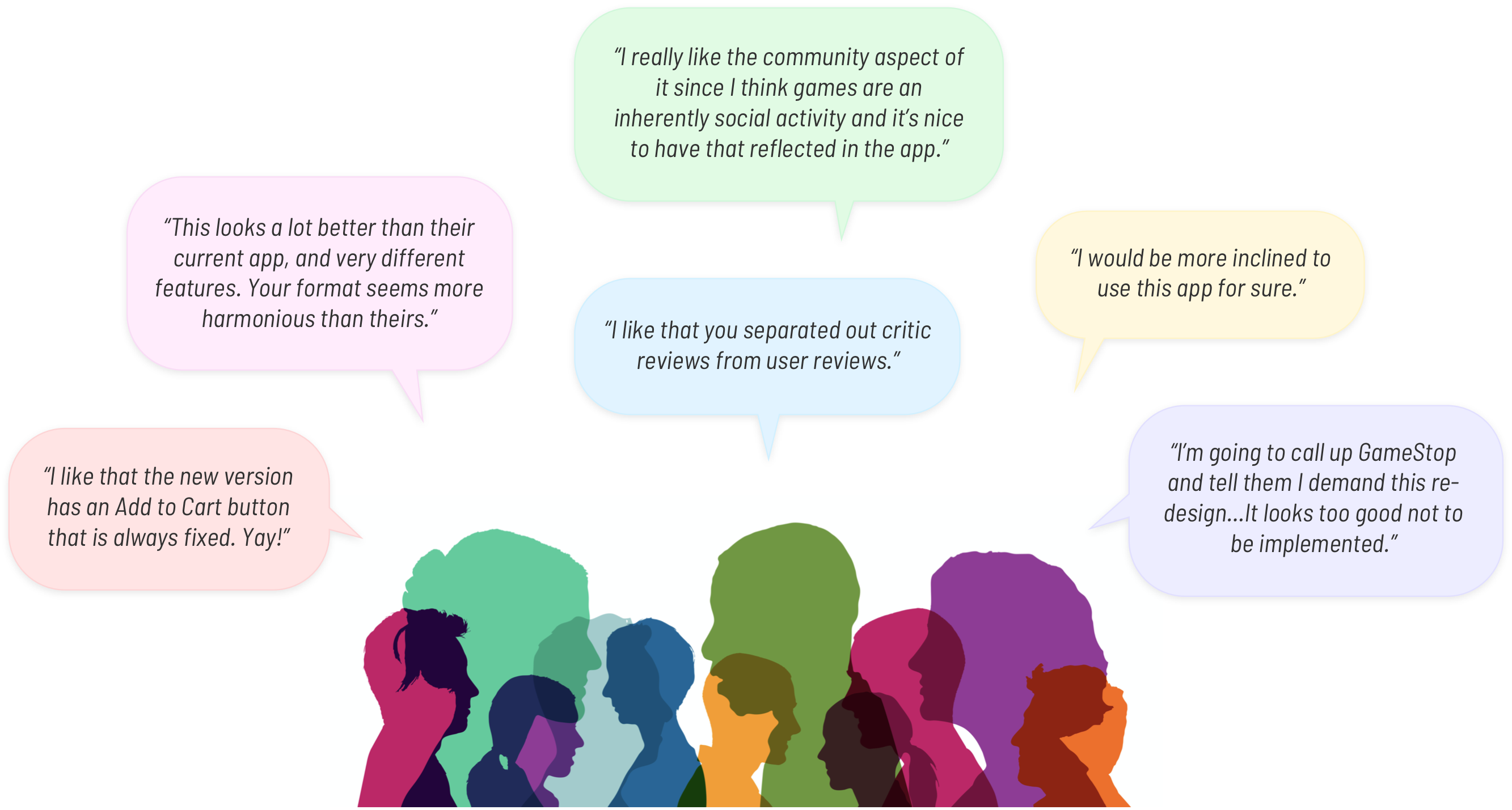
During this 2 week timeframe, my team and I were able to fulfill all project objectives set by GameStop. While most of my Mindtree team's discovery engagements are usually 2 to 3 months in duration, we were able to successfully recreate that process in this project, and deliver a conceptual prototype with user validation. Moving forward, if we are further contracted with GameStop, we intend to reach a larger user testing pool, and dive deeper into prototype creation with more features and functions.
In the meantime, we are glad that GameStop has recently executed our recommendation of integrating their Game Informer brand in-app, and displaying its sections via tabs (shown below), as we have proposed in our prototype. As they continue to gradually develop and address immediate needs before implementing larger architecture and database changes, we look forward to seeing more of our ideas being rolled out, and are excited to take next steps with GameStop in the future!
